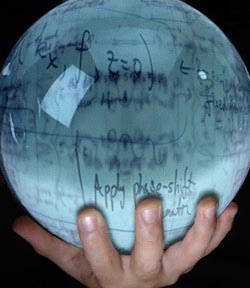The world of market research has come a long way in the last 100 years.
Procter & Gamble defined “research” in “market research” in the 1940’s. How? They employed hundreds of young graduates to go door-to-door, peppering willing homemakers with questions about each and every domestic chore for which the company either had a product or was considering launching one. The results not only gave P&G insight into its existing and new products, they provided significant competitive information that gave them the edge they were looking for.
Today the market research toolbox is filled with a plethora of tools and techniques - focus groups, surveys and conjoint analysis to name a few. But similar to the change that happened in the ‘40’s, there is a shift occurring that is dramatically changing, for the better, the way consumer goods companies take their products from concept to launch.
It is no longer “Build it and they will come”
According to a report from Deloitte, companies that maintain a dual focus on solving a real pain point and creating a great experience with their products are working from a consumer-centric development model. Essentially, they're taking specific characteristics and behaviors exhibited by consumers and contextualizing them using data generated by millions of individuals through social media and other platforms. In doing so, manufacturers can deliver unique products that are closely aligned with what consumers are actually looking for.
The new world of market research - predictive analytics
The world of consumer product development will be driven not just by data, but by cutting edge analytics that can deliver the true definition of “insight.” Utilizing customer data throughout the development cycle to inform key decisions is what will increase a brand’s product hit rate when it comes to getting successful products on the shelves. This means that companies will have to rethink current and somewhat outdated market research models and find new ways to test and validate concepts.
Product development cycles are shortening. Product innovations are being brought to market at unprecedented speeds, and consumers are engaging with brands on social media and mobile devices more than ever. Traditional market research techniques are not adapting fast enough to the changing speed and consumer engagement landscape.
So what is needed to bring market research in line with the connected consumer?
Speed – Scale – Science
Predictive Analytics bring a whole new dimension to the new product development process. There are many solutions to choose from, but there are three key components that you should look for when considering this approach.
Speed
The typical time-to-market for a consumer product is roughly 18 months, and a lot can change in that time. OEMs have no way of knowing that research done in the beginning of the cycle is still valid a year and a half later. Predictive analytics, on the other hand, can generate results in a matter of days. This makes it possible to get a near real-time view on what's happening in the market, allowing retailers to make adjustments on the fly.
Scale
Because of their time-consuming nature, traditional research methods are only equipped to test a few products and features at one time. Due to the ease with which consumer data are generated, predictive analytics can test countless attributes and products at once.
Science
Traditional research methods like focus groups and surveys weigh every consumer's opinion equally. This is not the optimal solution if you want to truly understand what products consumers want and what they are willing to pay for them. Predictive analytics, when used correctly, finds the right people to listen to and gives more “weight” to what they have to say.
Success in the consumer product space comes down to who can get winning products on the market the fastest. This requires an approach that allows brands and retailers to test and iterate new products in rapid development cycles, always validating their ideas with consumers before moving forward. With this mindset, companies can reduce product risk, shorten development cycles and put out products that have a much better chance of staying on shelves for a long time.













